Soft insoles are suitable for people with joint pain, pregnant women, heavy people and athletes.
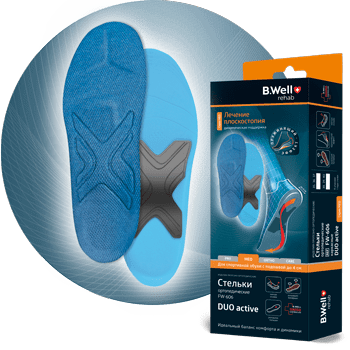
- What are anatomical insoles?
- What models of anatomical insoles does Poland offer?
- product catalogue
- What orthoses are made of.
- How to choose correctly
- Functions of orthoses in transverse flatfoot
- How to choose orthopedic insoles
- How do I choose insoles for different types of flat feet?
- How to choose an orthopedic insole for transverse and longitudinal flatfoot?
- Overview of the best insoles
- B. Fountain
- Features and Benefits
- types of products
- Types of orthopedic insoles depending on the purpose
- prophylactic models
- Comfortable shoe inserts.
- therapeutic models
- type of deposits
- How do I choose the right insoles for my child's flat feet?
- Where can you buy insoles?
- reviews
What are anatomical insoles?
Anatomic insoles are insoles with specific curves (reliefs) that provide comfort and safety during movement. These insoles are designed to lift the foot properly when walking, distribute the load evenly, and support both the longitudinal and transverse arches of the foot. They are used to prevent foot pain.
Anatomical or ergonomic insoles are designed to conform to the shape of the foot.
Orthopedic insoles - serve to correct, heal existing problems. These insoles usually have a rigid insole, a full arch to support the arch of the foot, and the heel in the insole can be a flat 'Lom' or have a shaped heel to transfer body weight to the outer arch of the foot.
What models of anatomical insoles does Poland offer?
We offer our customers 7 different models of anatomical insoles.
- Anatomical skeletal insoles 'Classic' for closed everyday shoes.
- Soft anatomical insoles 'Grazia' for everyday, sports and dress shoes with a high heel of up to 7 cm.
- Soft anatomical insoles 'Energy' for sports shoes, the pointed nose allows use in model shoes.
- Anatomical insoles 'Motion' for sports and leisure shoes.
- 'Lady' anatomical insoles for casual and model shoes with a heel of more than 6 cm.

The models differ in the material of the upper and lower part, as well as the presence of specific relief in the problem areas:
- Leather or textile is used for the upper;
- Plastic is used as the base for the skeletal models, while EVAPOR is an elastic, non-shrinking material for the other models.
Come to our 'Polza' stores, competent consultants will help you choose the desired model of anatomical insoles, or order at polza-shop.by with delivery by courier, post or home.

Make your feet happy and give them lightness and comfort!
product catalogue

Orthoses are insoles that provide targeted pressure relief and thus have a therapeutic effect. Orthoses are used to treat and prevent various forms of flat feet (longitudinal, transverse, flatfoot) and other foot and musculoskeletal disorders in general.
Can flat feet be corrected with orthoses?
Static flat feet can be corrected before the end of active foot growth, which is around age 16 for boys and 14 for girls. For this purpose, corrective orthopedic insoles are made that put pressure on the skeleton of the growing foot. Orthopedic insoles should be worn in shoes with a rigid insole and fastenings on the instep (laces, buckles, etc.). The use of insoles must be combined with daily exercise.
How important is correcting flat feet in children?
Since flat feet in children are often not clinically noticeable, parents often do not pay much attention to this condition. Also, many people think that the biggest problem that flat feet can cause is pain in the legs during static activities - walking, standing for long periods of time, etc.
Not everyone is aware that flat feet inevitably affect the entire musculoskeletal system. Flat feet primarily impair the cushioning function of the foot, which leads to increased stress on all higher joints of the lower limbs and spine. The connection between flat feet and bad posture, flat feet and varicose veins is well known.
Almost all patients over 40 years of age with flat feet develop degenerative-dystrophic changes in the musculoskeletal system:
What orthoses are made of.
Supinators are built into orthotics to provide arch support. This is important for longitudinal flat feet. The metatarsal pad serves to redistribute the pressure on the forefoot. She gently presses on the metatarsal bones. It is used for transverse flat feet. A combination of both can be found in longitudinal and transverse layers.

The coating may vary. However, natural leather is used more often. It prevents fungal diseases. There are also newer materials that make them washable. For more information about caring for the product, see this article. The price depends on what material is used.
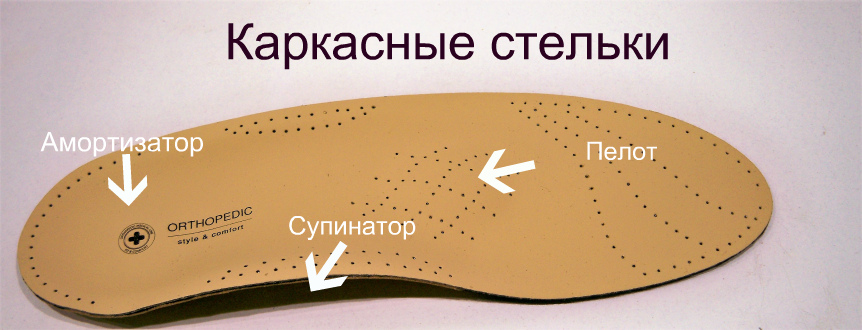
Orthopedic insoles for longitudinal and transverse flatfoot are often equipped with a shock absorber. This element relieves the heel and restores the cushioning function of the foot. I have already written about this topic. I won't repeat it. Be sure to read.
How to choose correctly
Having understood the intricacies described above, you can easily buy lengthwise orthotics for yourself or your child. It is important that they have an insole and a footrest. Whether you need soft or firm insoles depends on the degree of flattening. You can find out for yourself by reading the information I have already posted.
With the first and second degree of longitudinal sinking it is recommended to wear insoles, with the third and fourth degree of sinking it is recommended to wear frameless insoles. The problem is simple. The vast majority of people opt for a rigid base. It prevents further development of the disease.
The type of midfoot shaft also makes a difference. The classic variant for transverse flatfoot is the teardrop shape. It is available in many deposits. And it fits almost everyone. T-shaped rollers are recommended for severe forms of hallux valgus development. And in the case of a pes cavus, a 90-degree insole. But that is very rare.
You can do it! It's not complicated. The most important thing is to understand the concept, which I have detailed here.
Functions of orthoses in transverse flatfoot
Orthotics help to correct the alignment of the foot in a transverse flatfoot. By wearing insoles, the foot gradually returns to its normal shape.

The most important functions of insoles for a transverse flatfoot:
- correct redistribution of load;
- protection of joints and spine;
- prevention of leg fatigue and pain;
- Prevention of blisters and abrasions on the feet.
How to choose orthopedic insoles
If you already have a medical condition, your doctor should prescribe orthotics for you. Custom insoles are most effective for flat feet.
To prevent flat feet, you can buy ready-made insoles in an orthopedic specialty store.

There are different variants of insoles for the correction of transverse flat feet:
There are frame insoles and frameless insoles. Frameless insoles are softer. They are recommended for the 'diabetic foot'.
The Eskulap orthopedic salons offer ready-made insoles for transverse flatfoot. Our consultants will select the right insoles for you to treat and prevent arch deformities. It is also possible to have custom insoles made for all types of flat feet.
How do I choose insoles for different types of flat feet?

- For the treatment of transverse flatfoot Insoles have heel support and a cushioned toe separator.
- In the case of longitudinal flat feet does the insole have a footbed with a certain height. It is possible to change the angle of the foot with wedges.
- malleolar deformity A valgus deformity requires special insoles. These are equipped with a pronator, a high edge and a pelota. They are made from hard materials.
- With a varus deformity. In the case of varus deformities of the foot, the insoles are made with additional devices. Spare parts for the correction are included in the set.
It is important to follow the advice of medical specialists and not take responsibility yourself. Personal initiative can be detrimental to health.
How to choose an orthopedic insole for transverse and longitudinal flatfoot?

With longitudinal flatfoot, the arch of the foot aligns. The pain is caused by pressure on the metatarsal bones. The shoe slides inwards. The insole is pulled up on the inside.
Transverse flatfoot is defined by the formation of a flat foot in the area of the toe phalanx. When walking, the foot feels discomfort in the toes (they become cramped). In this case, insoles are a good idea. These are special insoles with a small elastic band. They are placed on the foot where the metatarsal bones are located.
The early stages of flat feet are not an obstacle to physical activity, but it is worth being careful. It is worth paying attention to pain in the calf muscles during sports. s here
Overview of the best insoles
There are domestic and foreign manufacturers of orthopedic insoles. There are models made of different materials, for different shoes and taking into account the diagnosed condition.
Companies that manufacture orthopedic products:

OrthoDoc – is a Russian manufacturer for individual use. The insoles and correctors are made for different types of shoes, taking into account the patient's diagnosis and age group. They have good cushioning and are hypoallergenic.

Vimanova – is an orthopedic footbed developed in Germany. The flexible material allows for easy adjustment to the foot. It is suitable for many types of shoes. Reduces the impact of walking.

pedag – Well-known German company producing orthopedic spine insoles. High quality products. Special equipment is used in its manufacture. During manufacture, the foot is examined for the precise application. The products are in high demand.

hedgehog – Carbon-based shoe inserts. Suitable for people with an active lifestyle. Reduces stress and relieves joint pain.

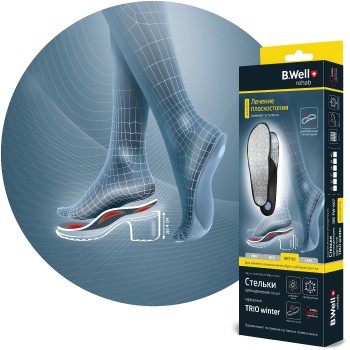
Orthopedic frame insoles for the winter.
![]()
![]()
![]()
![]()
![]()
![]()
![]()
![]()
![]()
![]()
![]()
Provides comfort in direct contact with the skin of the foot, helping to keep feet healthy
Soft padding relieves the sensitive areas of the foot, relieves pain in the heel area.
Ergonomic soft foam padding gently supports the internal longitudinal and transverse arch of the foot and aligns the biodynamics of the step.
Anatomical skeleton made of special hard plastic with increased flexibility supports the inner and outer longitudinal arch of the foot
The flexible anatomical skeleton made of special plastic gently supports the inner and outer longitudinal arch of the foot and corrects the biodynamics of the step.
Soft polymer foam metatarsal pad relieves pressure on toes and positions them correctly.
B. Fountain
We have simplified the selection of products by dividing them into the PRO, MED, ORTHO and CARE lines. So everyone can find the right product for their needs!
you feel easy walking i Prevention of transverse flat feet UNO insoles and half insoles help. It is a solution for open and closed shoes, which is also suitable for high-heeled shoes.
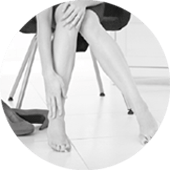
The DUO range of insoles and half insoles for children and adults helps the treatment of longitudinal and transverse flat feet.. The technological DUO insoles support the arch of the foot, align the joints and prevent the development of clubfoot in children.

The CARE line is gentle care for your feet. The products in this line are intended for people who need special, gentle care, especially in the preparatory or rehabilitation phase after surgical interventions.

TRIO insoles and half insoles with high-strength shells can help For chronic foot problems.. By supporting the arch of the foot in longitudinal and transverse flatfoot, aligning the heel and joints of the lower limbs and spine, TRIO insoles provide the necessary walking comfort and reduce pain syndrome.

Nearly 80% of the population population suffers flat feet. In women, flat feet are 4 times more common than in men.
The most common cause of flat feet is weakened muscles in the foot and lower leg, as well as weakened bones and ligaments.
Overweight, uncomfortable shoes, standing work, lack of adequate physical activity can lead to foot deformities and thus the development of flat feet.
Uncomfortable feet can also be affected by wearing high-heeled shoes. High heels Or wearing shoes with a high heel or a narrow toe box.
Features and Benefits
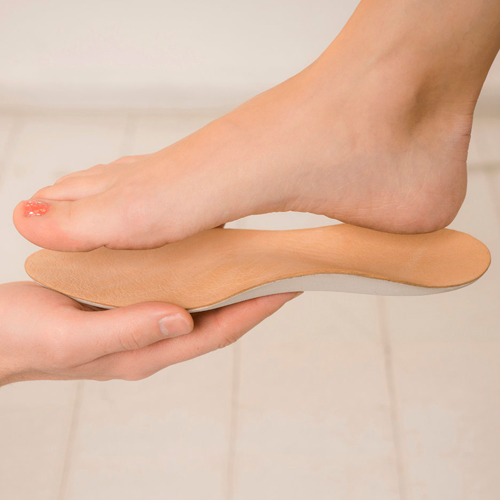
An orthopedic insole is a special shoe insert that ensures that the sole adapts to the anatomical structure of the foot. The structure consists of several components:
Manufacture generally by computer modeling based on an impression of the foot. Shaping is done manually or with special equipment. The surface is often coated with an antibacterial material that reduces the risk of fungal diseases and odors from prolonged wear.
The use of orthoses has a number of positive effects:
- reducing the load on the legs and back;
- maintaining the natural position of the joints;
- maintaining the arch of the foot in the correct position;
- preventing excessive stress on the muscles of the feet;
- reducing pain associated with frequent foot rotations;
- normalization of blood circulation in the tissues;
- reducing swelling and pain in your feet or back;
- Increased stability.
The insole ensures that the soles of the shoes do not rub against the feet, which minimizes the chance of corns and blisters.
types of products
Insoles are classified according to three main criteria: type, shape and hardness of the product.
By the type of material, the following most popular models are distinguished:
- Gel - can adapt to any foot shape;
- silicone – developed for prophylaxis;
- Snap-Ins - have a rigid base for better foot support.
Depending on the shape, the insoles are divided into longitudinal, transverse and longitudinal-transverse insoles. Depending on their construction, they can be profiled, non-profiled, solid, padded, etc.
There is also a division into three subcategories according to the degree of hardness.
- Soft shoes are recommended as a preventative measure when there are no obvious foot defects. They are mainly used for light summer shoes.
- Hard shoes are less thick but have a stronger frame. Suitable for severe foot problems. Suitable for practically any footwear.
- Medium-strength shoe inserts combine the advantages of both types and are therefore universally applicable.
Types of orthopedic insoles depending on the purpose
prophylactic models
These models are intended for people who do not suffer from foot pain but whose feet get tired. For example, when walking or standing for a long time. The insoles must be soft and comfortable to walk on. These models are usually made of leather, silicone, gel or foam.

![]()
- Pregnancy.
- For demanding jobs with a lot of pressure on your feet (salespeople, hairdressers, dentists, healthcare workers).
- In case of varicose veins.
- With athletes.
- In the early stages of flat feet.
- women wearing high heels.
Comfortable shoe inserts.

- Big Foot.
- Deformed toes.
- Flat feet of 3-4 degrees.
therapeutic models
Models for people who already have foot lesions. Poor blood circulation in the lower limbs. Pain may occur when using these insoles. This is due to the insoles trying to position the foot in its correct position. The ligaments and muscles become overloaded, causing pain.

- osteoarthritis.
- Poor condition of the feet.
- diabetes.
- Rheumatoid arthritis.
- Plantar fasciitis (heel spurs).
- Clubfoot, varus, or flatfoot valgus in children.
type of deposits
Pressure-relieving insoles chosen when the load is distributed from the problem zones to the whole foot. This is done by recesses or grooves in the footbed. These help avoid contact between the painful area of the foot and the shoe. There are also materials of different densities and compositions that reduce the pressure when walking or standing for long periods.
corrective insoles Correct the position of the foot in relation to the musculoskeletal system. To do this, they have additional elements: pronators, supinators, pelotics and high sides.


Insoles for sneakers are chosen to reduce the load on the foot. They are said to relieve pain in the foot and increase endurance.
Svodoforming products They are designed to gradually shape the arch of the foot. They are mainly used in children's orthotics for flat feet in children.

How do I choose the right insoles for my child's flat feet?

Orthopedic insoles for longitudinal flatfoot must have a high supinator to support the arch of the foot and wedges to change the angle of the foot when walking, ie to ensure correct alignment of the limbs. The hardness of the product and the material used must be chosen by the orthopedic surgeon, taking into account the type of deformity and the severity of the pathology.
Most often, with a longitudinal flatfoot, products made of a material with high hardness are recommended. They balance the sagging arch of the foot as much as possible, fix the heel in the correct position, relieve pain and stop the progression of the disease.
Insoles for transverse flatfoot are made with a heel corrector and a special roller to separate the toes. The construction of such products must include a pelota. This is a special insole, also known as a metatarsal pad. It supports and relieves the transverse arch of the foot, relieving the pain associated with the formation of a 'bone' in the big toe. It is important that these insoles are made of natural, breathable and correspondingly soft material. Plastic insoles are mainly used in overweight patients.
Orthoses for combined flat feet are harder to find. These are more complex versions of the product that feature multiple elevations in the toe and midfoot areas. It is necessary to choose insoles with 2-3 support points that will support both the transverse and longitudinal arches of the foot, evenly distribute the load on the musculoskeletal system, relieve fatigue and leg pain. Insoles for longitudinal-transverse flatfoot are selected by the doctor individually for each patient, taking into account the features of the foot deformity.
Where can you buy insoles?

A diverse range of orthopedic insoles for flat feet is now offered by specialist shops and pharmacy chains. The geography of the manufactured products is no less broad - on the shelves you can find orthopedic insoles from German, French, Italian and English production. The local manufacturers are not neglected either. Today, more than 40 companies across Russia produce orthopedic products. So there is no problem where to buy orthotics for flat feet.
The prices for these products also vary greatly. The cheapest products cost from 500 rubles, and the cost of high-quality medical insoles imported from reputable companies can reach several thousand rubles.
Trives products, for example, are made of genuine leather, have a semi-rigid base and are used to correct flat feet of 1 and 2 degrees. The price of these products starts from 700 rubles.
Talus produces different models of insoles for adults and children - soft, with frame or full profile. Their price ranges from 600 to 2,000 rubles.
Orto orthopedic products are models with a flexible or rigid frame, suitable for winter use and even for sports activities. The cost of these products ranges from 800 to 3,000 rubles.
Custom made insoles can be more expensive but have the best therapeutic effect as they take into account the degree of foot deformity. But the therapeutic effect is also the best, since the product takes into account the degree of foot deformity and the anatomy of the foot, allowing for maximum correction of pathological changes. In this case, the insole is made on the basis of a plaster cast of the foot with computer modeling.
reviews
Read more:I've been a seller for many years, which means I'm on my feet for many hours. When I was younger it was easy for me to take, but now I'm struggling. At the end of the day my feet hurt a lot, they are hot and tired and I can hardly go home. Also, they are swollen and I have great difficulty getting up in the morning when I have to walk a few meters to get up. I have trouble finding shoes that fit - it's difficult to find something comfortable for my feet.
- orthopedic insoles.
- Insoles are suitable for.
- What does the insole of a child's shoe look like?.
- orthopedic insoles.
- Insoles for valgus in adults.
- Orthopedic sports insoles for running.
- Manufacture of orthopedic insoles for children.
- Ortho insole.
